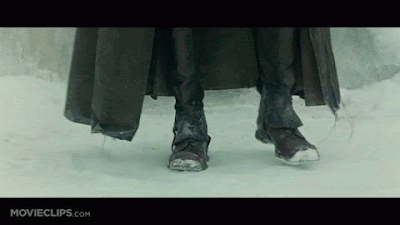Murder, Magic, and Madness at the Fair That Changed America - 4 stars
Taking two of my favourite genres, history and true crime, Larson has created a riveting read looking at the light and dark sides of Chicago and what man is capable of by looking at the work of two men: Daniel Burnham, an architect and the man responsible for overseeing the creation of the 1893 World's Fair, and H.H. Holmes, a fraudster and serial killer who turned the hustle and bustle of the fair to his own advantage and used it to lure vulnerable young women, out of home for the first time, to a building of his own design where they'd soon meet their ends.
Larson does a fantastic job of building a picture of what Chicago was like at the end of the 19th century - a world where people died young and often in a city of dark, filthy streets that stunk of sewage, the slaughteryards and the corpses of animals that lay where they fell. A city where a killer could design and build his own murder-house, and numerous people who worked or lived in his building could simply disappear, virtually unnoticed and unlooked for, their stripped skeletons sold on to medical schools who would ask no questions.
At the same time, in Jackson Park, an astonishing city is being built - one composed of colossal buildings and hundreds of concessions and exhibits from all over the world, including entire villages from far-flung places and offering wonders the likes of which the world has not yet seen. Illuminated by the first electric lights, used here on a grand scale, with buildings whitewashed by the world's first spray paint, and offering purified water and now famous household brands for refreshments, as well as the world's first Ferris Wheel - 264 feet high and boasting 36 cars, each capable of holding 60 passengers and equipped with its own bar - it's small wonder than in the six months the fair operated it received over 27 million visitors and raked in money that, at today's standards, would make even Bill Gates feel faint.

This was by far and away my favourite element of the book and I found reading of the terrifying task of building such a spectacle, in virtually no time at all and with the accidents and deaths which dogged it and the wrangles of the many committees and personalities who wished to control it, endlessly fascinating. I've since gone and found some photographs of the fair on Brooklyn Museum's Flickr stream (which you can view here)
that I find astonishing even today and which really brought home what a spectacular sight it must have been to 19th century eyes.
The sections on Holmes, while fascinating, couldn't possibly compete - a surprise to a true crime junkie, and possibly due to the comparative lack of documentation which led to a few instances where I wanted to call shenanigans; moments included to build the atmosphere or the story, but which Larson couldn't have possibly known and that are therefore responsible for the dropping of a star in rating.
That said, this really is a fantastic read, especially for those not usually keen on true crime, and one I recommend highly.























